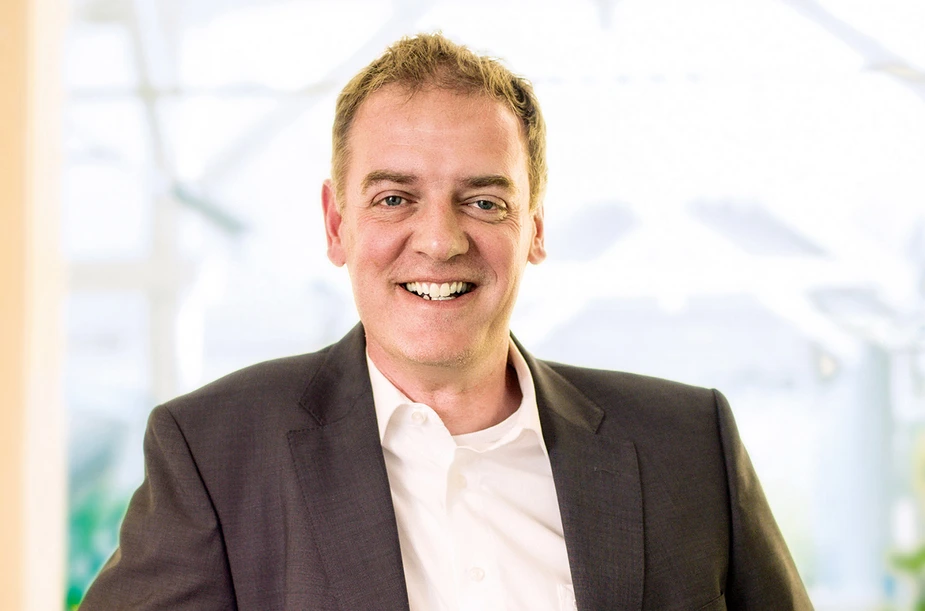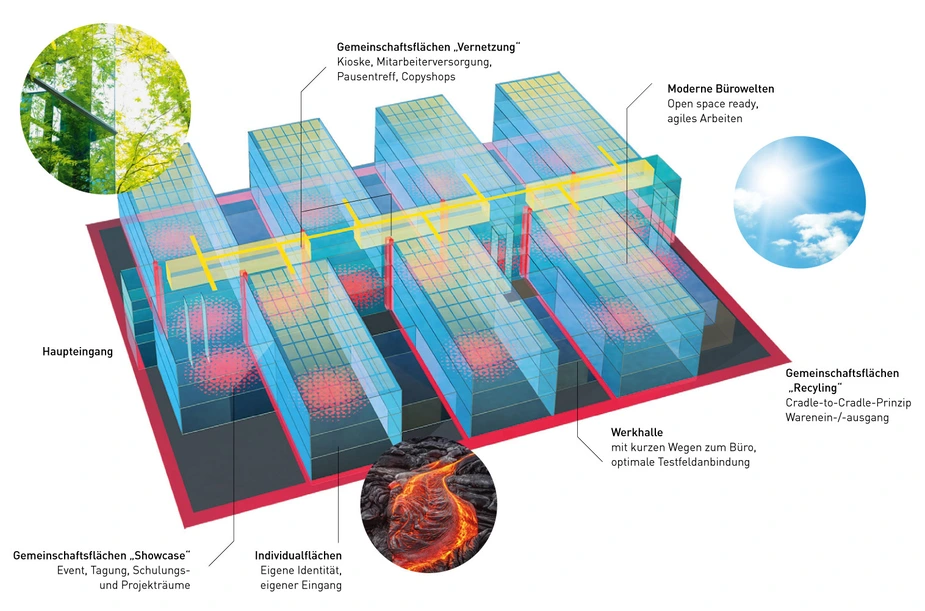The building as an energy cell
Modular, climate-positive, digitally connected, and recyclable: an architectural and energetic prototype for skilled trade hubs
In addition to being places that generate creative and productive energy, modern skilled trade hubs in cities will also produce physical energy. This is about self-sufficiency as well as connectivity – within buildings and with their surroundings. “In the end, a building should be climate-neutral, if possible, even decrease CO2 emissions and become climate-positive.” This is the vision of Steffen Klinger and his architecture firm KOP. His motto: “Energy becomes formative – architecture and energy are two sides of the same coin.”
For one, there is the exterior. The building ensembles are modular and comprised of blocks. This facilitates realising the same energy concept in different dimensions. The plan consists of buildings that are three to four storeys high. Using solar energy and heating technology, the roof of such a building can be sufficient to cover its energy demand. The companies can then use surplus energy for their own operations, which can be supplemented, where necessary, by buying energy from other providers. A cost-effective energy concept that also engages a building’s tenants. The KOP concept also considers building materials as part of the exterior: ceilings and walls are made of R concrete, roofs and window frames are made of wood, facades are built from glass and steel.
This may not sound spectacular, but it is they key to making the building as a whole recyclable and reusable. “The building is a storage for future materials,” as Klingler puts it. What all of them have in common is that they are either renewable, recycled, or recyclable raw materials. Steel and glass are classic building materials that can be produced reusing old materials. Concrete is also reusable. In Germany, so-called R concrete may now consist of 25 percent recycled materials. Switzerland now allows one hundred percent. Explicitly not included are plastics, especially insulated composite panels.
For the energy concept to work, says Klingler, it is important to take all aspects of the system into account. Building materials play an important role here – because they can store and distribute heat and facilitate the cooling of a building. The source of this thermal energy is the local environment. On the one hand, heat is gleaned directly from the ground using a system of heat pumps and underground heat exchangers. On the other hand, many companies produce heat themselves. Whether it’s a lathe, soldering bath, or washing stations, especially energy-intensive machines and processes generate ample heat that can be distributed throughout the building ensemble and used for heating. The ingenious interaction of all these components is controlled from a technology centre, that can also be modularly scaled. It also internally regulates input and output of electricity and heat as well as with external energy partners. “In this way, we create synergies through producing, using, and storing energy – in the city and for the city,” says Klingler.
Based on a life cycle assessment, the architecture firm can highlight the concrete climate benefits for operators and users alike. Take the following example: a usable roof area of 5,050 square metres with solar panels can generate about 450 megawatt-hours of electricity every year. Annually, the building under the roof with a total floor space of 16,600 square metres consumes about 40 megawatt-hours less. Overall, the regenerative and recyclable concept can create a decrease of about twenty tons of CO2 every year. The design of the building’s surrounding areas are also viewed systematically: courtyards, infiltration areas, ponds and an appropriate use of plants create a recreational space for workers as well as for flora and fauna – with positive effects for the workplace climate and the climate as a whole.
By Dr. Uta Deffke for Potenzial – The WISTA Magazine

